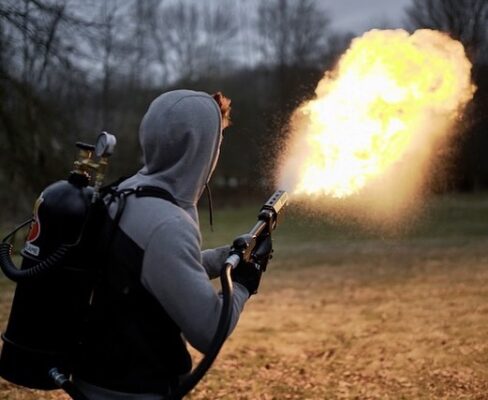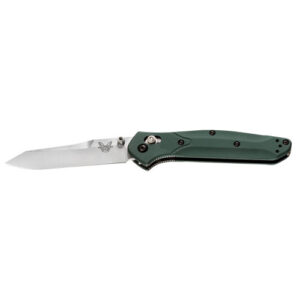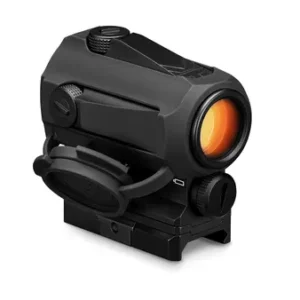FLAME THROWER

Flamethrowers canada have a long and fascinating history, and they are quite iconic in military history and popular culture.
Here’s a mini history lesson on flamethrowers for you:
1. Early Developments: Flamethrowers have been around for centuries in various forms. The ancient Greeks and Chinese used rudimentary flamethrower-like devices in warfare to project burning substances at their enemies.
2. World War I: The modern concept of the military flamethrower really took off during World War I when both the Central Powers and the Allies used flamethrowers to clear out enemy trenches and bunkers. These early flamethrowers were typically large, cumbersome, and required an operator to wear a heavy backpack tank of fuel.
3. World War II: Flamethrowers saw widespread use in World War II by various countries, with improved designs that made them more compact and efficient. They were used for tasks like clearing out bunkers, vegetation, and buildings.
4. Post-WWII to Present: After World War II, the use of flamethrowers in military operations decreased, given concerns about their battlefield ethics and the development of other weapons. However, flamethrowers have found a place in controlled environments like controlled burns for agriculture, firefighting, and even in some industrial applications.
5. Civilians and Hobbyists: In recent years, there has been a rise in interest from civilians and hobbyists in owning flamethrowers for recreational purposes like clearing snow and weeds, performing controlled burns, or just having fun in a safe and controlled environment.
So, whether you’re fascinated by their historical significance, intrigued by their modern uses, or just love the idea of shooting fire from a handheld device, flamethrowers are definitely attention-grabbing pieces of technology that have left their mark on history in more ways than one!
FLAME THROWER VERSATILITY
When it comes to flamethrowers, their versatility might surprise you! While flamethrowers are often associated with military use or dramatic fire effects in movies, they actually have a range of practical applications beyond combat. Let’s explore the versatility of flamethrowers:
1. Agricultural Use: Flamethrowers are sometimes used in agriculture for controlled burning of fields to remove weeds, pests, and excess vegetation. This method, known as “flame weeding,” can be an efficient and environmentally friendly way to manage crops without chemicals.
2. Forestry Management: In forestry, flamethrowers can be used for controlled burns to reduce fuel buildup, clear vegetation, and prevent wildfires. This method helps maintain healthy forest ecosystems and reduce the risk of uncontrolled fires.
3. Snow and Ice Removal: Flamethrowers have also been used for melting snow and ice on walkways, driveways, and even railway tracks. In cold climates, flamethrowers can be a quick and effective way to clear snow and prevent ice buildup.
4. Wildlife Management: In some cases, flamethrowers are used for wildlife management purposes, such as controlling invasive species or pests that pose a threat to native ecosystems. The controlled application of flames can target specific areas with minimal impact on non-target species.
5. Entertainment and Special Effects: Beyond practical applications, flamethrowers are often used in entertainment settings, such as concerts, festivals, and theatrical performances. They create stunning visual effects and add a touch of drama to various events.
6. Industrial Uses: Flamethrowers have industrial applications, including in the construction and maintenance of pipelines where controlled burning is needed for tasks like removing vegetation around pipelines or clearing debris.
So, while flamethrowers are undeniably powerful tools with a history rooted in warfare, their versatility extends to various industries and applications where controlled fire can be beneficial. It’s fascinating to see how a tool designed for combat has found niche uses in agriculture, forestry, snow removal, and more. Just remember, safety and proper training are essential whenever working with flamethrowers to ensure their effective and responsible use in different contexts!
FLAME THROWER AVIALABILITY
When it comes to the availability of flamethrowers, it’s essential to consider various factors, including legal restrictions, regulations, and the purpose for which you intend to use them. The availability of flamethrowers can vary significantly depending on where you are located and the specific type of flamethrower you are looking for.
1. Legal Considerations: In many countries and regions, the ownership and use of flamethrowers are heavily regulated or outright prohibited due to safety concerns and the potential misuse of such devices. It’s crucial to research and understand the laws and regulations governing flamethrowers in your area before attempting to acquire one.
2. Commercial Sellers: There are specialized companies and vendors that sell flamethrowers for specific purposes such as agriculture, controlled burns, or entertainment. These commercial flamethrowers are often designed for practical use and may be available for purchase by individuals or organizations with a legitimate need for them.
3. DIY and Homemade Options: Some enthusiasts or hobbyists may choose to build their own flamethrowers using legal and safe components. While this approach requires expertise in construction and safety precautions, it can provide a custom flamethrower tailored to specific needs.
4. Rental Services: In certain cases, rental services or companies specializing in event production may offer flamethrowers for temporary use in performances, shows, or demonstrations. Renting a flamethrower can be a practical option for one-time or occasional use without the need for long-term ownership.
5. Military Surplus: In some regions, military surplus stores or auctions may occasionally have decommissioned or replica flamethrowers available for sale to collectors or enthusiasts interested in historical military items.
As with any potentially dangerous device, it’s crucial to prioritize safety, legality, and responsible use when seeking out a flamethrower. Always ensure that you have the necessary permits, training, and understanding of local laws before attempting to acquire or operate a flamethrower. And remember, this fiery tool comes with responsibilities, so handle it with care if you find yourself in possession of one!
FLAME THROWER OVERVIEW
Flamethrowers are fascinating devices that have been used for various purposes throughout history. Here’s a breakdown of what a flamethrower is, how it works, and its typical components:
1. What is a Flamethrower?: A flamethrower is a device that projects ignited flammable liquid or gel, creating a stream of fire directed towards a target. It’s commonly used for controlled burns, agricultural purposes, military operations, and entertainment.
2. Components:
– Fuel Tank: Contains the flammable liquid or gel, such as napalm or gasoline.
– Pressurized Gas Tank: Provides the pressure needed to propel the fuel out of the nozzle.
– Nozzle: The exit point where the fuel is ignited and expelled as a stream of fire.
– Ignition Source: Typically a pilot light that ignites the fuel as it exits the nozzle.
3. How it Works: When the operator activates the flamethrower, the pressurized gas forces the flammable liquid or gel out of the nozzle. As this fuel passes by the ignition source, it is ignited, creating a stream of fire. The operator can adjust the range and intensity of the flame by controlling the fuel flow rate and the duration of the ignition.
4. Applications:
– Military: Historically used in warfare for clearing out enemy positions, bunkers, and vegetation.
– Agricultural: Utilized for controlled burns to manage weeds, pests, and vegetation.
– Entertainment: Popular in shows, concerts, and movies for dramatic fire effects.
– Industrial: Used in certain industries for clearing debris, maintenance, and controlled burning.
5. Safety Considerations: Flamethrowers are dangerous devices that require careful handling and strict safety protocols. Operators must be trained in their use, wear appropriate protective gear, and follow all safety guidelines to prevent accidents or injuries.
Overall, flamethrowers are powerful and versatile tools that have found a range of applications beyond military use. From controlled burns to theatrical performances, flamethrowers continue to captivate and intrigue with their fiery displays. Just remember, with great firepower comes great responsibility, so always prioritize safety first when dealing with these fiery devices!
FLAME THROWER SPECIFICATIONS
When discussing the specifications of flamethrowers, we can address the key features and considerations that define these incendiary devices. While specific details may vary depending on the type and purpose of the flamethrower, here are some common specifications associated with flamethrowers:
1. Fuel Type: Flamethrowers typically use flammable liquids or gels as fuel. Common fuels include napalm, gasoline, diesel, or specialized fuels designed for controlled burns or specific applications.
2. Range: The effective range of a flamethrower refers to the distance over which the ignited fuel can be projected. This can vary depending on the design and pressure of the device, with ranges typically ranging from 20 to 50 feet.
3. Fuel Capacity: The fuel tank of a flamethrower determines the amount of flammable material that can be expelled before requiring a refill. Fuel capacities can range from a few liters to multiple gallons, depending on the size and intended use of the flamethrower.
4. Pressure System: Flamethrowers use pressurized gas, such as nitrogen or compressed air, to propel the fuel from the tank to the nozzle. The pressure system plays a crucial role in ensuring a consistent and controlled stream of ignited fuel.
5. Ignition Mechanism: The ignition source of a flamethrower ignites the expelled fuel, creating a stream of fire. This can be a pilot light, an electronic igniter, or other mechanisms designed to reliably ignite the flammable material.
6. Nozzle Design: The design of the nozzle influences the shape, intensity, and spread of the fire stream. Nozzles can be adjustable to control the width or intensity of the flame, allowing for customization based on the application.
7. Weight and Portability: Flamethrowers vary in weight and portability, with handheld models designed for ease of use by an operator and larger, more cumbersome models used in military or industrial applications.
8. Safety Features: Modern flamethrowers may include safety features such as pressure relief valves, emergency shut-offs, and protective measures to prevent accidental ignition or fuel leaks.
These specifications give a general overview of what to consider when evaluating flamethrowers. Remember, the specifics can differ greatly depending on the intended use, design, and manufacturer of the flamethrower. Always exercise caution and prioritize safety when handling and operating these powerful and potentially hazardous devices!
FLAME THROWER HISTORY
The history of flamethrowers is quite intriguing, as these fiery devices have been used for a variety of purposes throughout the centuries. Here’s a brief journey through the historical evolution of flamethrowers:
1. Ancient and Medieval Times: The earliest recorded use of flamethrower-like devices dates back to ancient and medieval times. Historical accounts mention the use of early flamethrowers, such as Greek fire and Chinese fire lances, which expelled flammable liquids to create fire-based weapons.
2. World War I: Flamethrowers saw significant use during World War I, where they were utilized by various armies to clear enemy trenches and fortifications. The German army, in particular, deployed flamethrower units known as Flammenwerfer, which had a range of approximately 20 to 30 meters.
3. World War II: Flamethrowers continued to be employed in World War II, with improvements in design and effectiveness. They were used for tasks such as clearing out bunkers, tunnels, and other fortified positions. Both infantry-portable and vehicle-mounted flamethrowers were used by different nations during the conflict.
4. Post-World War II: After World War II, the military use of flamethrowers decreased, partly due to concerns about the humanitarian impact of such weapons and the development of alternative technologies. However, certain countries continued to maintain and deploy flamethrowers for specific purposes.
5. Modern Applications: In modern times, flamethrowers have found applications beyond the military. They are sometimes used in controlled burns for land management, agricultural purposes, firefighting operations, and even in entertainment or recreational settings for special effects and shows.
6. Legal Restrictions: The ownership and use of flamethrowers are subject to various legal restrictions in many countries. Regulations are in place to control their availability and ensure safe and responsible usage, particularly due to the potential hazards associated with handling such devices.
Overall, the history of flamethrowers reflects their evolution from ancient fire weapons to specialized military tools and versatile devices with diverse applications today. While their military significance has somewhat diminished, flamethrowers continue to be an intriguing and powerful symbol of mankind’s harnessing of fire for both destructive and constructive purposes throughout history.
Reviews
There are no reviews yet.
Related products
Accessories
Accessories





Be the first to review “FLAME THROWER”